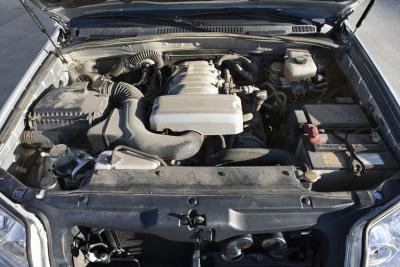
At the beginning of the automotive era, a vehicle’s chassis was no more than a skeleton that supported the rest of the components. Times have certainly changed. Today’s car frames are precisely engineered to extremely high standards, and dispersing impact is as important a facet of their role as creating a rigid structure on which to build the rest of the vehicle. For this reason, more than any other, a damaged frame is very bad for a car.
Collision damage can be both direct and indirect. Direct damage occurs at the point of impact -- for instance, if you are T-boned, the direct damage will be on the side of the car -- and is easy to look for. Indirect damage is far more insidious. A ripple effect can pass through the frame and weaken or deform locations that are remote from the point of impact. Most commonly this presents in a door sticking after a bump on one of the vehicle’s corners. Rear-end collisions are typically the most damaging; relatively minor events can have surprising ramifications.
Because frame damage can result from relatively minor impacts, it is possible for both private and commercial car sellers to pass on vehicles with compromised frames without knowing it. More frequently, though, cars with damaged frames enter the market through unscrupulous car dealers who buy “write-off” accident-damaged cars at low prices, disguise the faults rather than fix them, then purport them to be undamaged.
Automotive manufacturers have to pass stringent crash tests before they are allowed to introduce their products to the marketplace, but these tests are carried out on perfect examples. Even minor deviations from the frame’s ideal alignment and shape can put passengers at substantially increased risk. Crumple zones may not react as they should. Air bags may inflate in random directions, or not deploy at all. Wheels can be left projecting marginally further from one side of the vehicle than the other, resulting in dangerously subpar steering and braking behavior. The car may pull to the left or right when driving at normal highway speeds, even on a road with no camber. The doors, hood and trunk may not close and latch securely.
Indirect damage is particularly difficult to isolate with the naked eye. Specialist businesses exist to determine frame condition, and some body shops have computerized laser-measuring jigs that do the same. Typically, the technicians at such businesses are able to give advice on repair or restitution. That said, even a well-repaired, previously deformed frame is unlikely to ever be as strong or as perfectly aligned as one that has never been damaged. If a dented frame is discovered in a pre-purchase inspection, the potential buyer would be well advised to look elsewhere.